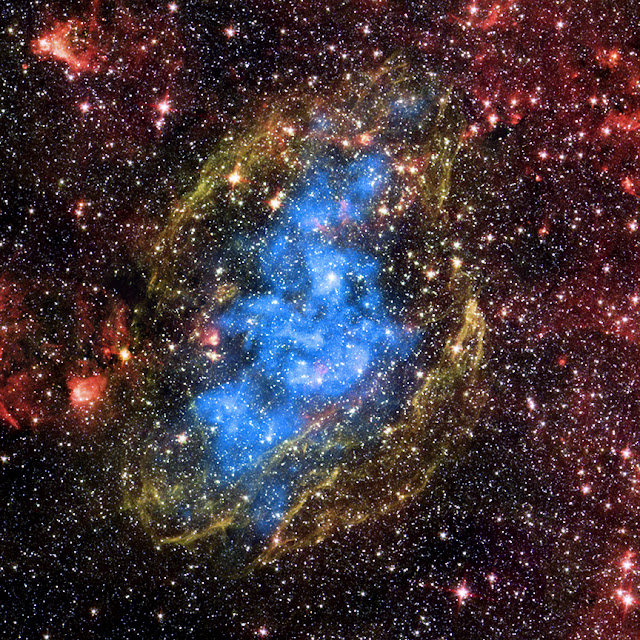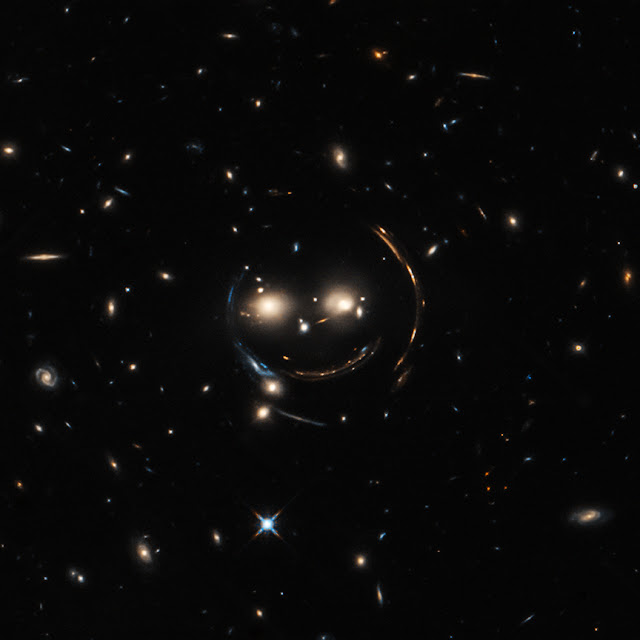What is it?
A group of galaxies nicknamed the "Cheshire Cat" about 4.6 billion light years from Earth.
How Far Away is it?
About 4.6 billion light years.
How is it Made?
X-rays from the Chandra, optical data from Hubble telescope.
How Big is it?
About 1.45 million light years across.
What do the Colors Mean?
X-rays are blue, optical red, green and blue.
Where is it Located?
In the constellation Ursa Major.
- This group of galaxies has been nicknamed the "Cheshire Cat" because of its resemblance to a smiling feline.
- Some of the cat-like features are actually distant galaxies whose light has been stretched and bent by the large amounts of mass contained in foreground galaxies.
- X-rays from Chandra show that the two "eye" galaxies and the smaller galaxies associated with them are slamming into one another in a giant galactic collision.
Astronomers think that in the future the "Cheshire Cat" group will become what is known as a fossil group, a gathering of galaxies that contains one giant elliptical galaxy and other much smaller, fainter ones. Today, researchers know each "eye" galaxy is the brightest member of its own group of galaxies and these two groups are racing toward one another at over 300,000 miles per hour. Data from Chandra (purple), which has been combined with optical data from Hubble, show hot gas that has been heated to millions of degrees, which is evidence that the galaxy groups are slamming into one another. Chandra's X-ray data also reveal that the left "eye" of the Cheshire Cat group contains an actively feeding supermassive black hole at the center of the galaxy.
Image Credit: X-ray: NASA/CXC/UA/J.Irwin et al; Optical: NASA/STScI)
Explanation from: http://chandra.harvard.edu/photo/2015/cheshirecat/more.html











